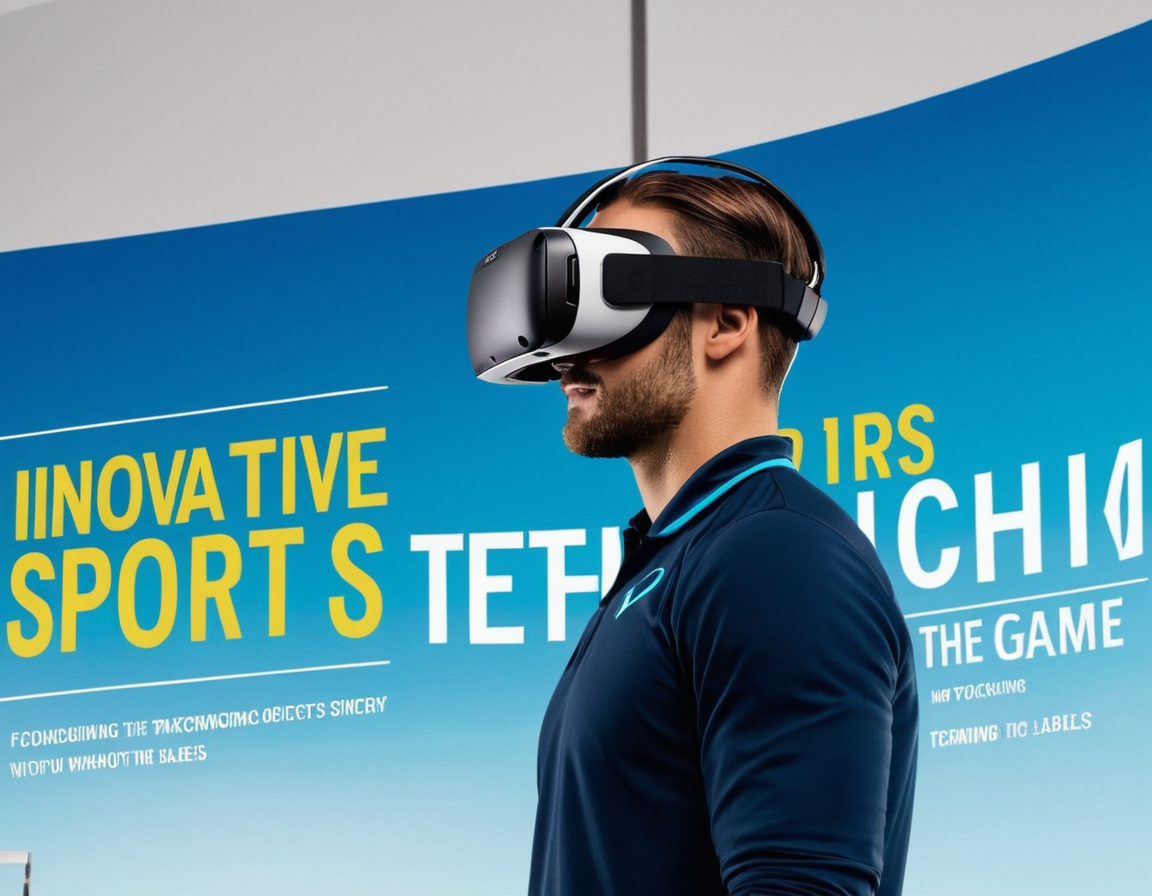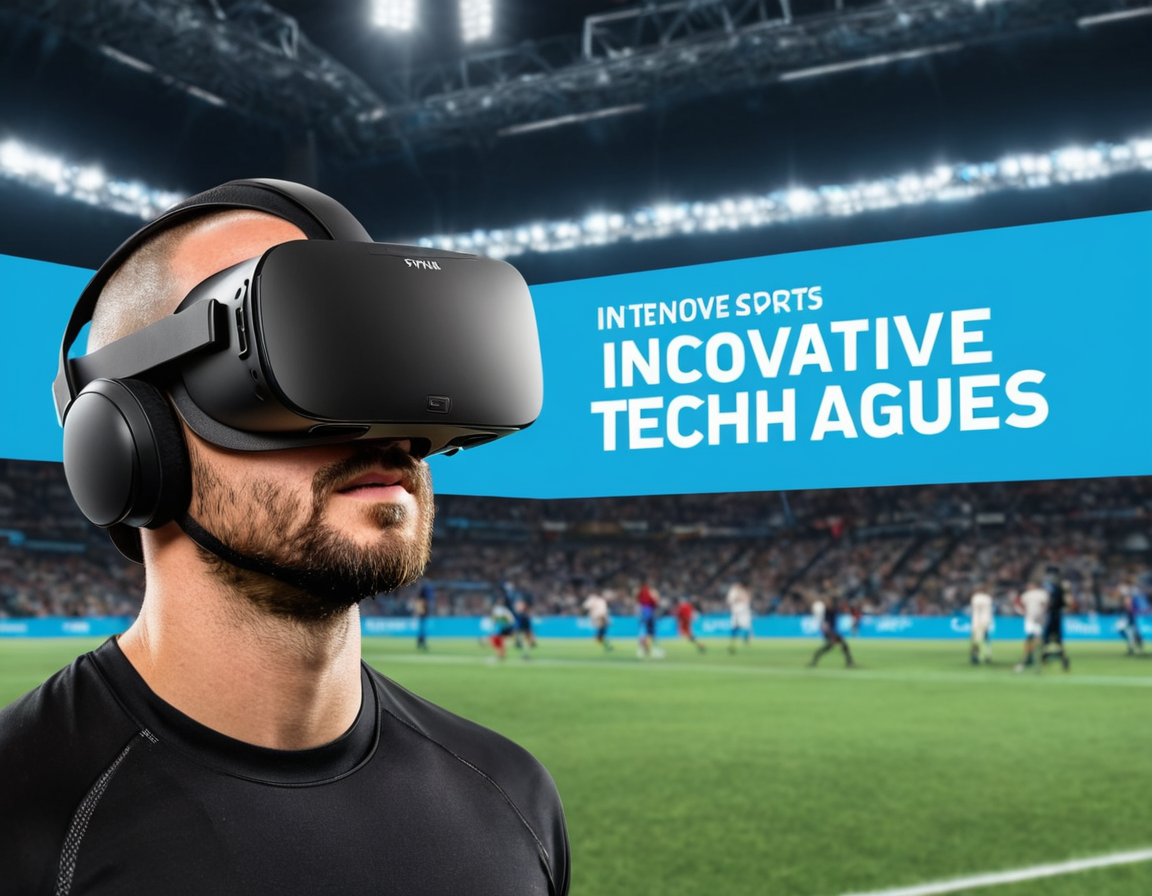: Innovative Sports Techniques: How Virtual Reality is Transforming the Game

In recent years, virtual reality (VR) has emerged as a game-changer not only in entertainment but also in sports training and performance enhancement. As technology continues to evolve at an unprecedented pace, VR’s potential applications in athletics are becoming increasingly apparent. From injury prevention to enhancing team strategy sessions, here is how virtual reality is transforming the world of professional sports:
1. Enhanced Training Sessions – With virtual reality simulations, athletes can practice their skills without physically leaving their training facility or putting stress on their bodies. These immersive environments allow for realistic and controlled scenarios that can be customized to challenge athletes at varying skill levels, ultimately leading to better performance on the field or court.
2. Improved Visualization – Coaches and players alike can use virtual reality platforms to visualize potential game situations, allowing them to strategize more effectively and anticipate opponents’ moves with greater accuracy. By rehearsing complex plays in a digital space before taking it to the actual playing ground, teams gain a significant edge over their competitors.
3. Performance Analysis – Thanks to VR technology, coaches can now analyze players’ performances in real-time and provide feedback immediately after each session. This immediate feedback loop enables athletes to quickly correct any mistakes or fine-tune specific aspects of their game without delay.
4. Injury Prevention and Rehabilitation – Virtual reality offers a unique opportunity for athletes to work on injury prevention by simulating scenarios that mimic real-life sports situations, helping them strengthen weak areas and avoid potential injuries in the future. Moreover, VR can also aid in rehabilitation post-injury by providing targeted exercises tailored to each athlete’s specific needs.
5. Mental Training – Sports psychology plays a crucial role in an athlete’s success, which is why mental training has become increasingly important. Virtual reality provides a safe space for athletes to confront their fears and build confidence through exposure therapy. It also allows them to practice staying focused under pressure, maintaining composure during high-stress situations that would otherwise be difficult or unsafe to replicate in real life.
6. Global Accessibility – With virtual reality simulations, athletes from all corners of the globe can now access world-class training facilities and top coaches without leaving their homes. This level playing field ensures that talent is no longer limited by geographical barriers.
7. Increased Fan Engagement – Virtual reality experiences offer fans a more immersive and engaging way to connect with their favorite teams and athletes, leading to increased fan loyalty and support. As sports leagues capitalize on this technology for live events, it’s expected that viewership numbers will continue to rise in the coming years.
8. Enhanced Sponsorship Opportunities – With VR training comes a wealth of data about each athlete’s performance and progress, which can be valuable to sponsors looking to tailor their marketing efforts more effectively. This unique insight into athletes’ capabilities also provides an opportunity for brands to create targeted campaigns that resonate with fans on deeper levels.
9. Revolutionizing the Way We Watch Sports – As virtual reality continues to evolve, it is poised to revolutionize how we consume sports altogether. By allowing viewers to step inside their favorite games and teams like never before, VR promises a more engaging and personalized experience that could change the face of sports entertainment forever.
10. Preparing Athletes for Future Sports Evolution – With emerging technologies such as brain-computer interfaces and exoskeletons on the horizon, virtual reality is helping athletes prepare for the next frontier in athletic performance enhancement. By training within immersive digital environments that mimic these future technologies, sports professionals can better understand how to adapt their skills to new and evolving tools and techniques.

In conclusion, virtual reality’s impact on professional sports has been transformative, offering innovative training methods, improved visualization capabilities, performance analysis, injury prevention strategies, mental training opportunities, global accessibility, increased fan engagement, enhanced sponsorship potential, a revolutionized viewing experience, and preparation for future technological advancements. As VR continues to evolve, it will undoubtedly shape the landscape of sports in unprecedented ways, elevating athletic performance and fan experiences alike.
